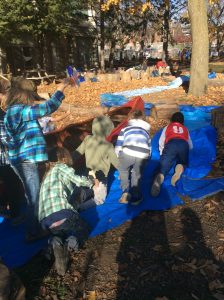On Friday, September 29th, our school board wore orange shirts to remember the mistreatment of Indigenous children in residential schools. As September 30th is the national day for truth and reconciliation, Friday was the day we recognized this date in schools.
This year, one of my students who just arrived in Canada a few years ago asked why we do this every year. I gave him the best answer I could, mentioning how important it is to learn about the mistakes of our country’s past and to work towards reconciliation. He understood that but didn’t understand why we were watching the same story as last year. So this year I decided to have my students reflect on some of the key takeaways of reconciliation.
- How genuine are apologies? Do they change what happened in the past? For this, we watched several videos of apologies made to Indigenous communities
- What can you do in your life to make sure you never try to change someone? We reflected on how all these children were assimilated after their arrival to the schools and how their rights and freedoms were taken away
- We shared how learning about this each year is part of the truth and reconciliation process and that it is an important part of the work that still needs to be done
However, the “why” on Friday made me remember that the “why” should always be the central focus of all of our lessons. If we don’t know why we are teaching something or starting some project, we haven’t really thought out our lessons. If there is no end goal or why, then we need to re-examine our work and try again. Which is why I am so glad I was asked that on Friday, I needed to remember what I wanted the learning to be. I worked backwards from there.
Another important thing I remembered this year was that our newcomers may not know about this history of our country and it may be a lot to tell them at once. I had some of my students translate the central ideas around Orange shirt day but fear it may have been too much to handle. Next year, I look forward to planning ahead of time with an ESL teacher to think how I can make this learning more accessible for all.
As we reflect on our past and how we can better shape the future, I think about our new language curriculum with the Indigenous focus of many expectations and look forward to planning and focusing on the “why”.








